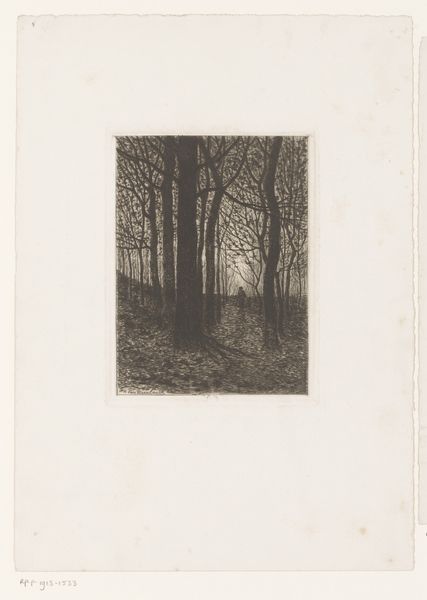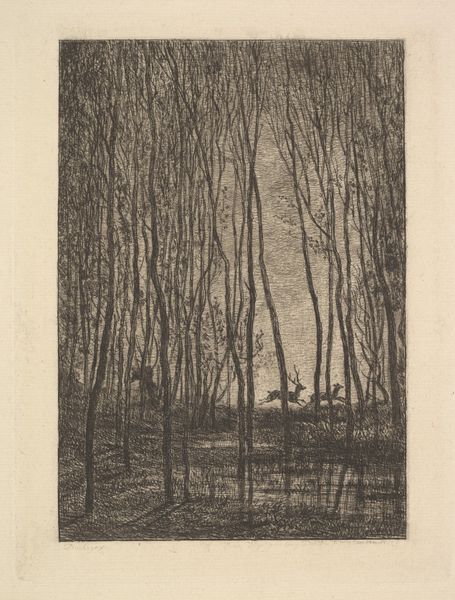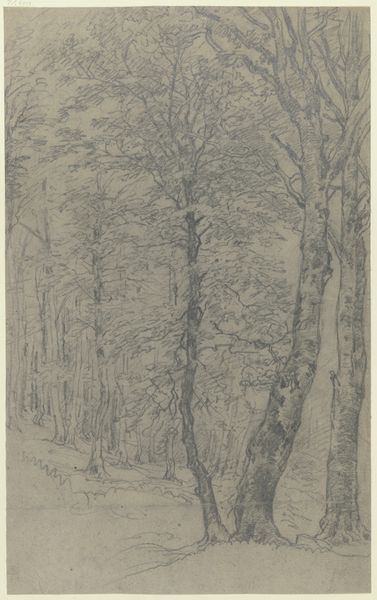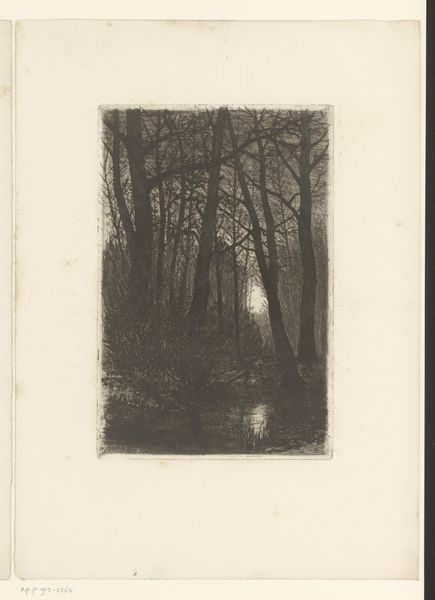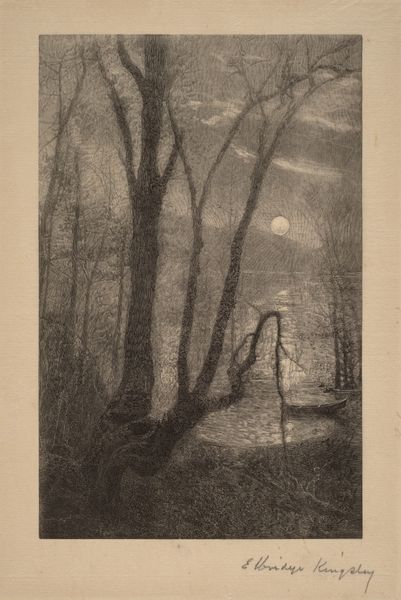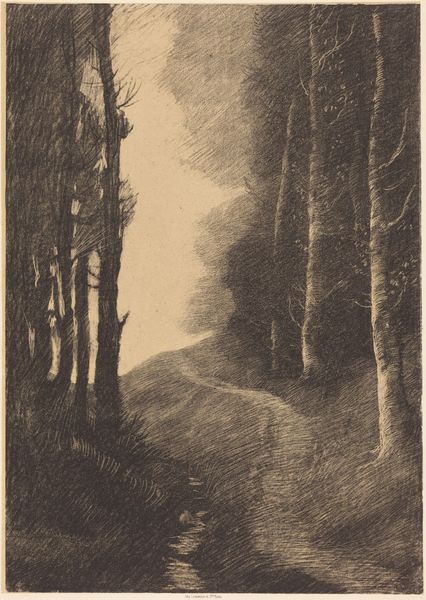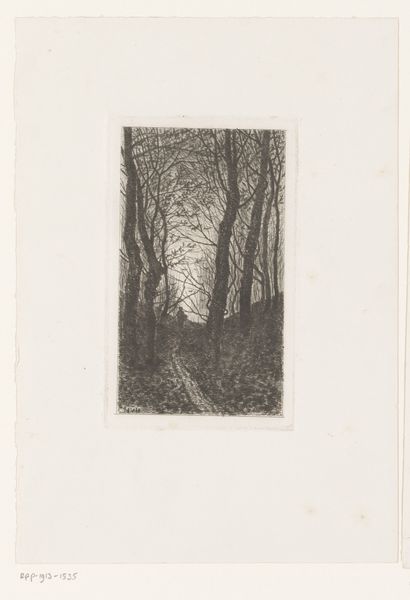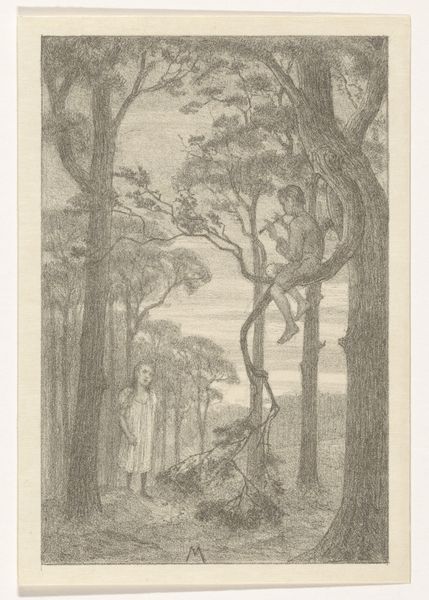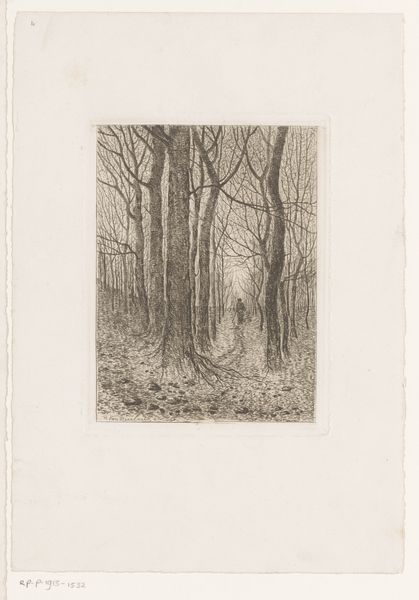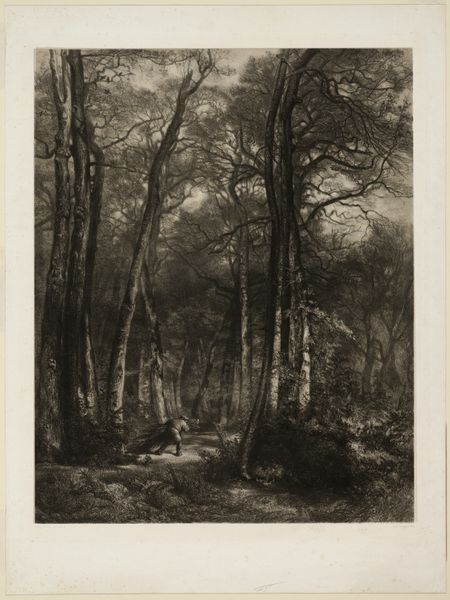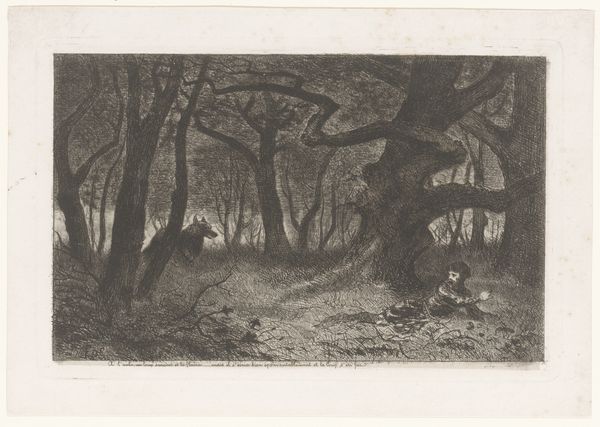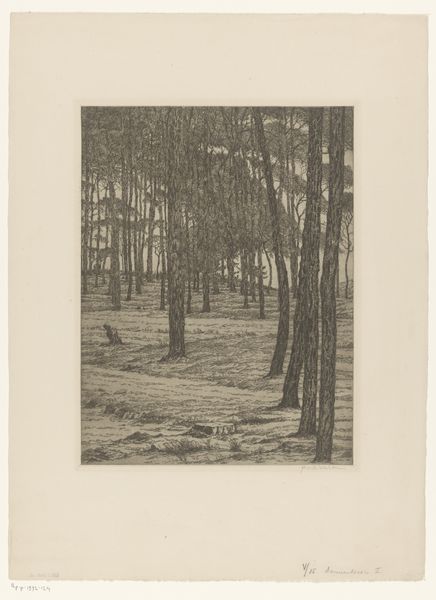
#
pencil drawn
#
photo of handprinted image
#
natural shape and form
#
light pencil work
#
shading to add clarity
#
pencil sketch
#
old engraving style
#
etching
#
forest
#
pencil work
#
shading experimentation
Dimensions: height 383 mm, width 250 mm
Copyright: Rijks Museum: Open Domain
Editor: Here we have Simon Moulijn's "Bomen," created in 1898. It's a pencil drawing, currently residing in the Rijksmuseum. The atmosphere feels so still and a little bit eerie to me. The bare trees disappear into the mist... What aspects of its composition do you find most striking? Curator: The linear quality is compelling. Notice how Moulijn uses only slight variations in tone and value to describe spatial recession. It's almost monochromatic. Do you observe any specific textural elements? Editor: Yes! There’s the rough tangle of roots in the foreground, contrasting with the smooth, almost ethereal trunks further back. The light catches those roots so they appear very three-dimensional compared to the flat background. Curator: Precisely. Consider how the composition emphasizes these elements – the linearity, the restricted tonal range, the textured foreground against the soft background. These are all key to understanding the internal structure and its effect on the viewer. It almost resembles a musical score. Editor: A musical score, how so? Curator: In that each tree trunk functions as a single vertical line. The positioning and density of them dictate the mood and rhythm of the image. Think of serialism. The effect seems very intentional and contributes to the work's affect. What do you think about that reading? Editor: That's a really interesting way to look at it. I hadn’t considered that the layout has more than one function, serving as representation *and* something more abstract and patterned. Thanks, that really broadened my perspective. Curator: It's in these relationships and the interrogation of materiality that the image begins to unfold.
Comments
No comments
Be the first to comment and join the conversation on the ultimate creative platform.
